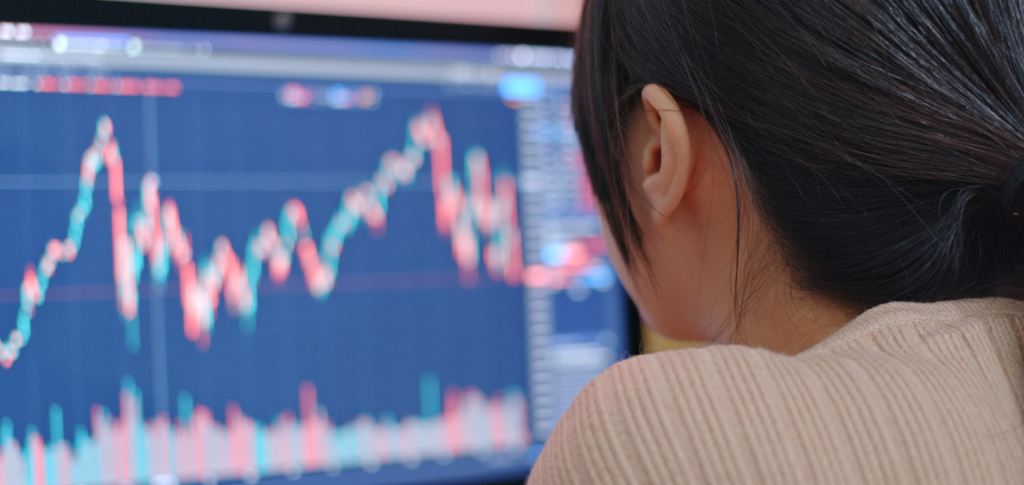Trading futures could be a great profit-generating centre for speculators. As a trader, you would want to protect your portfolio against adverse financial circumstances and minimise losses. Of course, there are many solutions to this problem, but trading futures could be your best bet, especially if you’re always seeking a fast-moving opportunity.
So, what does the term “futures” mean and how do you trade such contracts? This article explains all you need to know about this exciting subject.
Risk warning: Futures are complex financial derivatives and may not be suitable for beginners or legal to access in your country. Please ensure that you perform your own research before using complex financial instruments.

What is a futures contract?
Anyone looking to join the world of trading needs to understand all the terms used to avoid any confusion. As a trader, you’ll come across words like “stock, forex, share market, options, and futures”. Futures, particularly, refers to a contract between two people or parties that agree to complete a given transaction in the future.
The agreement basically describes the nature of the transaction, which includes the commodity or security in question, the price and the expected date of the transaction. You’ll need to set a fixed price and the exact date when this transaction is supposed to take place. Unlike traditional transactions, though, not all futures lead to the delivery of the commodity in the subject.
Traders generally engage in futures contracts as an opportunity to hedge risks or generate profit rather than actually owning the goods. The common types of futures contracts include interest rates, currency, metals, stock index, grains, energy, stock index, and livestock.
It’s also worth noting that the futures market is centralised, which means the trading is done via an exchange platform (online) or in a physical location. Whichever option you choose, you can still complete whichever transaction you want. (1)
Going online
You might be wondering: How does the trading process occur in case you opt for online brokers? Here are some of the main points to keep in mind as a new investor:
Step 1: Choose a trading platform
As a trader, you can either choose to trade futures at a physical place or do so through online methods. With the latter, you’ll need a reputable trading platform that’ll fulfil all your needs.
The good thing is that there are currently many trading platforms available. It’s, therefore, upon you to do your due diligence and choose one that meets all your demands. It’s always a good idea to go with a platform that offers other investment options apart from futures contracts. The ease of use and the process of monitoring and managing your account are other factors to consider in the process. (2)
Step 2: Open an account
The next step before starting your trading journey is to set up an account with a reputable broker. Some organisations allow you to choose between an individual and a joint account. You’ll also have to specify more factors for your margin privileges application to be approved.
Step 3: Develop a trading strategy
Like any other investment opportunity, trading futures contracts needs a well-thought-out strategy for it to work. So, after choosing a platform and opening an account, the next step will be to put down your strategy.
When choosing a strategy, it’s important to note that there are two analytic tools available to you as a trader: fundamental and technical. Successful investors make use of both aspects in their strategies, and you can do so too. Fundamental analysis focuses on the financial, economic and Federal Reserve data when measuring the value of a trading opportunity. (3)
Technical analysis, on the other hand, makes use of volume, past prices and variables derived from market activity. Using a combination of technical and fundamental analysis gives you a clear picture of how successful a given contract could be in the long run.
While at it, it’d be a good idea to also do your research based on third-party fundamental data. This includes going through up-to-date blogs and reading futures trading books. This way, you’ll be well-equipped to create a strategy that works.
Conclusion
Generally, trading has always been one of the best forms of investment chosen by many investors. One can generate profit provided the necessary effort to research and prepare is there.
A futures contract is currently among the most popular trading opportunities. It involves striking a deal with another party and signing an agreement to complete this deal at a future date.
Like any other investment, you’ll need to do your due diligence before risking your money. Finally, once you’ve decided on the right platform to use, you can come up with a strategy using both technical and fundamental factors in your analysis.
References
- “Real Effects Of Centralized Markets: Evidence From Steel Futures”, Source: https://papers.ssrn.com/sol3/papers.cfm?abstract_id=3299384
- “What Is A Trading Platform?”, Source: https://corporatefinanceinstitute.com/resources/knowledge/trading-investing/trading-platform/
- “Fundamental Analysis Of Commodities”, Source: https://www.thebalance.com/fundamental-analysis-of-commodities-809310